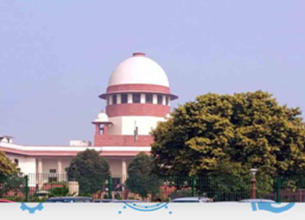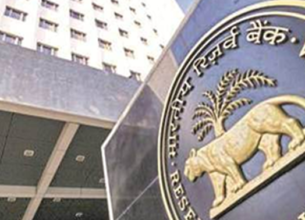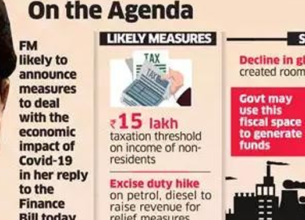DO RBI’S INFLATION TARGETING REALLY PROMOTES INDIA’S GROWTH?
24, Dec 2019

Why in News?
- Indian Economy is being through a slowdown, and in this scenario, the efficacy of RBI’s Inflation targeting process has come under criticism, stating it as a reason behind this slowdown.
- So, the process of inflation targeting and the benefits accrued due to it and the possible reasons (apprehensions) behind various criticism and the way forward has been discussed in this article in brief.
What is Inflation Targeting?
- Inflation Targeting is a part of monetary policy framework wherein the Central Bank of a country focuses on maintaining the rate of Inflation within a targeted range.
- It is believed that increasing prices in an economy create uncertainties in decision making, adversely affecting savings and encouraging speculative investments (such as buying Gold). Inflation targeting brings in more predictability and transparency in deciding monetary policy.
- Inflation targeting was first adopted by New Zealandand subsequently, a large number of countries including India have been following Inflation Targeting as their core element of monetary policy.
- In case of India, the Inflation targeting was introduced through the Monetary Policy Framework Agreement signed between the RBI and Government in 2015. As per terms of the agreement, RBI’s primary objective would be to maintain price stability, while keeping in mind the objective of growth. The RBI is required to maintain rate of inflation of 4% with a deviation of 2% i.e. inflation has to be maintained between 2% to 6%.
Benefits of Inflation Targeting
1. Enhanced Transparency: The Inflation targeting explicitly states as to what would be the targeted rate of Inflation in an economy. Such explicitly mandated target brings in more clarity and predictability with respect to the rate of Inflation and monetary policy formulation.
2.Promote Growth: A high rate of inflation leads to decrease in the purchasing power of currency, reduces the savings and investment rate, increases the unemployment and leads to overall decrease in the GDP growth rate. Further, high rate of inflation is accompanied by higher levels of Fiscal Deficit and Current Account Deficit leading to an adverse impact on the macro-economic stability of the country. Hence, low and moderate level of inflation would incentivise the investors to undertake the investment in the economy leading to the promotion of higher growth and development.
3.Autonomy and Accountability of RBI: As per the monetary policy framework agreement, the RBI has been given complete autonomy in maintaining the rate of inflation within the mandated targets. If the RBI fails to maintain the Inflation within the target, then it would be required to submit in writing, the reasons for its failure.
Such a provision enables the RBI to enjoy autonomy and at the same time, it enables the Government to have enhanced accountability over the actions of the RBI.
4. Empirical Evidence: The Inflation targeting has been quite successful in some of the advanced economies such as UK, New Zealand etc. These advanced economies have been able to maintain moderate rate of inflation for a much longer time leading to increased macro-economic stability.
Problems and Challenges with Inflation Targeting
1. Disregards the Multi-faceted role of RBI: In a developing country like India, it is not practical for the central bank to focus exclusively on inflation without taking into account the larger development context. The RBI needs to balance between growth, price stability and financial stability.
2. No Clear link between Price Stability and Financial Stability: Prior to 2008, advanced economies were able to maintain moderate rate of inflation for a long term mainly due to adoption of Inflation Targeting. It was believed that Inflation targeting was responsible for overall macroeconomic stability of the country.
However, the 2008 Global Financial Crisis has clearly proved that price stability alone cannot lead to financial stability and the excessive focus of the Central banks on the price stability may lead to neglect of other crucial functions such as regulation leading to the economic crisis.
3. Empirical Evidence failing in India: The RBI has been able to maintain stable rate of Inflation within the mandated range since last 2-3 years. However, inspite of stable rate of Inflation, Indian economy is facing challenges on multiple fronts. The GDP growth rate has been reduced to 25 quarter low of 5% for the first quarter of financial year 2019-20.
The unemployment has increased to 45- year high of 6.1%. There has been contraction in the manufacturing activity as evident in declining IIP. The agriculture sector is staring at agrarian distress. All these clearly highlight that the Inflation targeting has failed to promote growth and development.
4.Poor Monetary Policy Transmission: The Inflation targeting is more suited to the developed economies since the monetary policy transmission in such economies is quite efficient. However, in case of India, the monetary policy transmission is quite inefficient and this can in turn reduce the effectiveness of Inflation Targeting.
5. Hinder GDP Growth: In order to contain Inflation, the RBI would be required to increase the rate of Interest by following the contractionary monetary policy. However, such a policy would lead to increase in the rate of interest on the loans leading to decrease in investment and consumption expenditure leading to decline in the GDP growth rates. For example, during 2013-2015, the higher interest rates in the country on account of higher rate of inflation had led to decrease in the GDP growth rates.
6. Does not address the Supply Side Inflation: The inflation in India may take place due to supply side bottlenecks such as increase in global crude oil prices, poor monsoon, floods etc. For instance, the recent increase in the prices of Tomato and Onions is mainly on account of supply side disruptions.
Under such circumstances, RBI would have limited role to play in easing the rate of inflation. Rather, the Government of India would be required to address these supply side disruptions in order to moderate the prices of such commodities.
Way Forward
- Post-Global Financial crisis, the dominant view around the world is that flexible inflation targeting, rather than pure inflation targeting is more efficient for monetary policy formulation.
- According to the Flexible inflation targeting, the major role of the Central Bank would depend on the prevailing rate of inflation in the country. If the rate of inflation is way off the target, the primary emphasis of the central Bank would be to bring the rate of inflation within an acceptable range.
- On the other hand, if the rate of inflation is within the range, the central Bank should focus on its other core objectives. Thus, it is being said that the Central banks should focus on flexible inflation targeting rather than pure inflation targeting. Here pure inflation targeting means RBI solely concentrating on the inflation targeting at the cost of other major functions of it.
- In this aspect, there is a need for greater debate around kind of Inflation targeting in India.
















